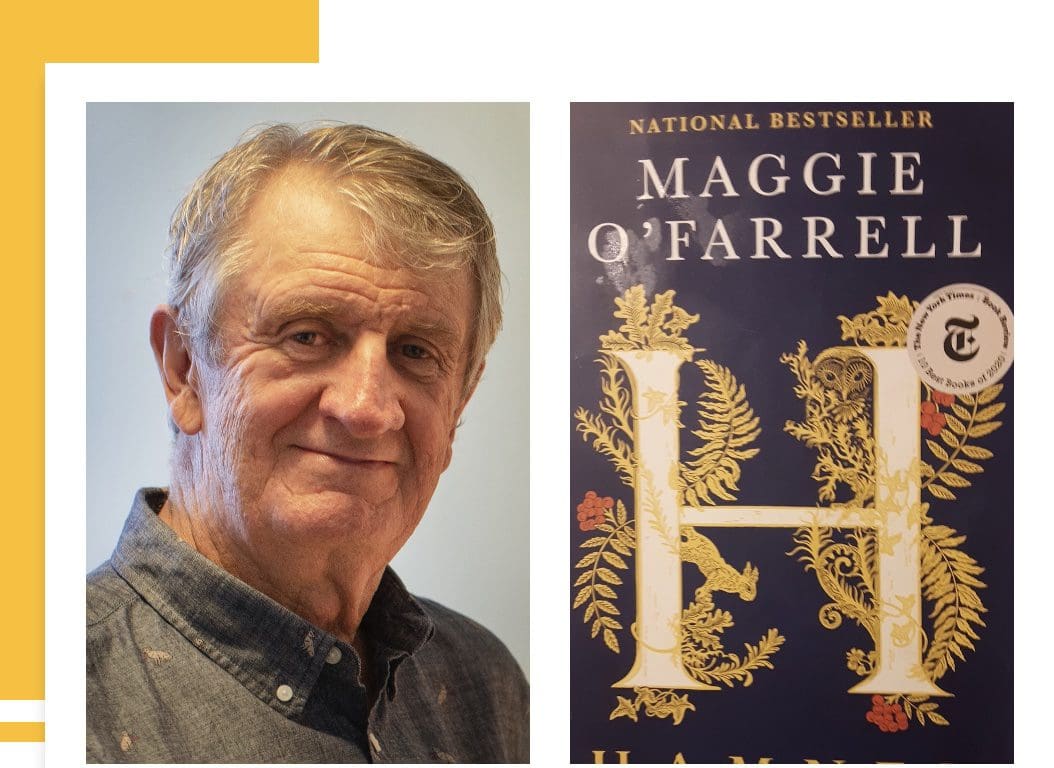Search Posts
Recent Posts
- Real Estate in RI: Seaside waterfront communities are all the rage. Who’s buying – Emilio DiSpirito June 6, 2025
- Outdoors in RI: 2A votes, Charter Yachts, active summer programs, garden tours, aquatic weeds… June 6, 2025
- All About Home Care, with two Rhode Island locations, closing after 22 years in business June 6, 2025
- GriefSPEAK: Angel wings with footprints – Mari Nardolillo Dias June 6, 2025
- Rhode Island Weather for June 6, 2025 – Jack Donnelly June 6, 2025
Categories
Subscribe!
Thanks for subscribing! Please check your email for further instructions.

Hamnet – a book review by Jim Raftus
By Jim Raftus, book reviewer
The book’s title is Hamnet, he is the son of William Shakespeare, but make no mistake this is definitely the fictional story of the Bard’s wife, Agnes. (Shakespeare’s wife is widely known as Anne, however her father listed her as Agnes on her death certificate.)
In Hamnet, Maggie O’Farrell’s best-selling new historical fiction, the author creates an amazing, heart wrenching imagining of a woman’s life in Stratford, England in the 1580’s.
O’Farrell boldly places a single page before the beginning of Chapter One:
Historical Note
In the 1580’s, a couple living on Henley Street, Stratford, had three children: Susanna, then Hamnet and Judith, who were twins.
The boy, Hamnet, died in 1596, aged eleven.
Four years or so later, the father wrote a play called – Hamlet.
_____
O’Farrell has offered this bare-bones synopsis of true events from which she conjures up her fabulous tale. It is noteworthy that she uses the word “father” in this historical note. Not once in this epic novel do the names, Will or Shakespeare, appear! He is referred to in oblique ways; son, brother, father, playwright…etc. It is a clever sleight of hand by O’Farrell to keep the focus on Agnes.
There are two story lines in Hamnet, separated by 15 years of time. It begins near the chronological end of the later tale with the plague striking Agnes’ twins, but often reflects back to the sensuous and dangerous beginning of her courtship, shot gun marriage and the burden she carries running the household while her husband vacillates between working at his father’s glove making company and his nascent attempts at writing.
Readers will be tempted to try and cull fact from fiction in this work. That would be a mistake. It is best absorbed as a brilliant character study of a woman trying to hold together a family and a marriage in the not so bucolic life in 1580’s England.
Agnes is a feral, mystic and earthy woman who grew up in the woodlands. She is shunned by many for her eccentricities, sought out by others for her near miraculous skills with medicinal plants and potions. Fiercely independent, she does however fear her husband’s extremely long and frequent absences from Stratford as he strives for success in the burgeoning London theater scene.
O’Farrell’s amazing descriptive talent is showcased throughout the work, but the most obvious example is the ten-page long chapter chronicling how the disease-ridden flea which ravages the Shakespeare’s family came to their household. This diabolical journey flows from a glassmaker in the Murano section of Venice, through a crew ship sailing into Alexandria, then stopping at Constantinople, finally arriving at a London dock where it is transferred to a seamstress shop in Stratford where Judith Shakespeare is helping out. The author’s rendering of the unlucky happenstances, the dumb, bad luck and serendipity of this journey could be described as comical and lighthearted were it not for the multiple deaths accompanying it.
Cruel death, suffering and grief are ever present in the lives portrayed in Hamnet.
Shakespeare has to grow to maturity before he can fend off the abusive attacks of his father. Shortly after marrying Agnes’ widowed father and becoming her stepmother, Joan takes a kitchen knife and lops off the young girl’s hair declaring she, “…hadn’t the time to be attending to that every day”. Not much parental love went into forming the odd couple who would become Mr. and Mrs. William Shakespeare.
The most difficult to read sections of Hamnet are also the most heartfelt. Agnes’ anger, her futile commitment to curing her child, her denial then anguished acceptance of death are vivid portraits of almost unbearable parental angst.
This is not easy reading. Viewed through the lens of our current pandemic, Agnes’ losses seem even more profound.
Hamnet is O’Farrell’s ninth novel. It is her first historical fiction. It will be of great interest to see where her vast literary skills bring her next.
_____

Jim Raftus retired from a 35 year career in marketing and sales in 2011.
Jim is a Veteran having served in the Army from 1968 to 1971. His primary posting was in Alaska. His Army days served as a chapter he wrote for local author Terry Nau’s book “Voices of the Vietnam War” published in 2019.Jim chronicles the guilt felt by many members of the military who served during Vietnam but were stationed elsewhere.
Jim’s work has also appeared in the Boston Globe, Providence Journal, New England Living Magazine and RINewstoday.com
Jim’s higher education journey was an often interrupted 11 year journey which included credits from Roger Williams University, University of Rhode Island and the University of Alaska before finally earning a Bachelor of Arts degree from Rhode Island College in 1975. Jim was awarded the Outstanding Creative Writing Award at the commencement.
Jim served as the Foxboro correspondent for the Attleboro Sun Chronicle in the late 1970’s.
He is a Rhode Island native and long time resident of Cumberland.
Contact: jimraftus33@gmail.com
Read more: www.whorlofwords.com

Thank you for this review. I will give it a look. Oh yes, and there is that back door reminder of that other one whose works had been relegated to the far back room in my dusty brain area.